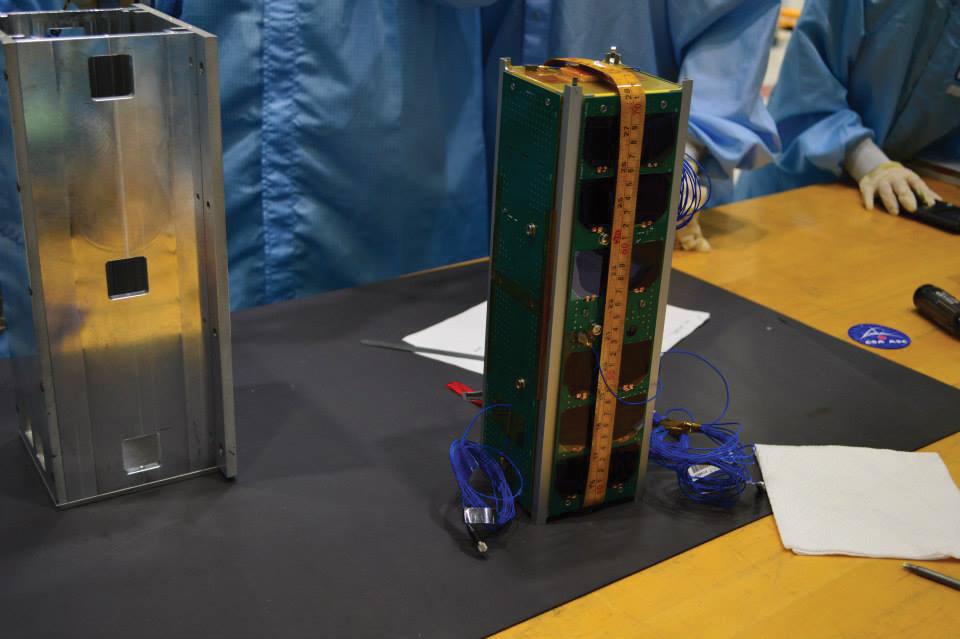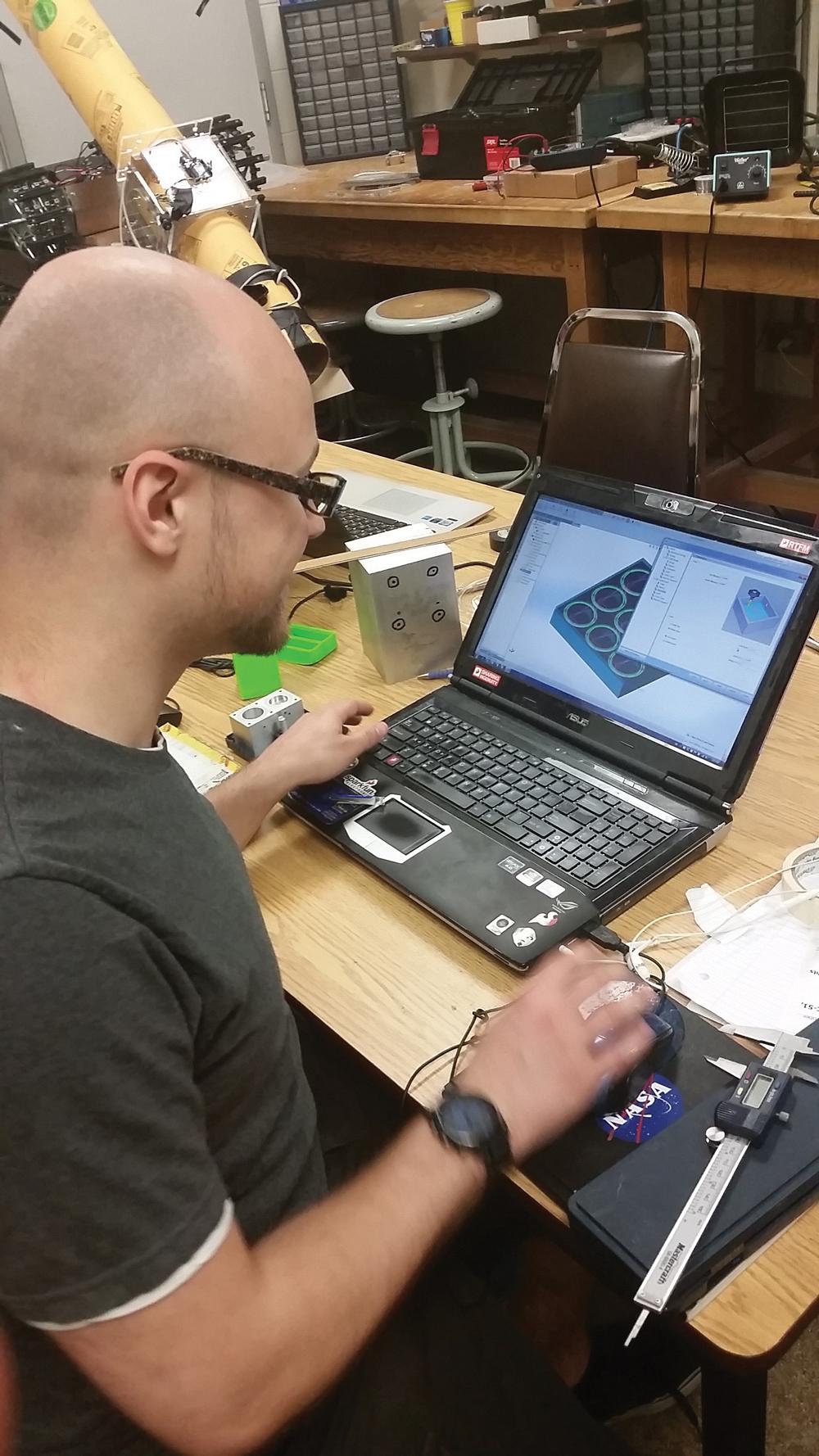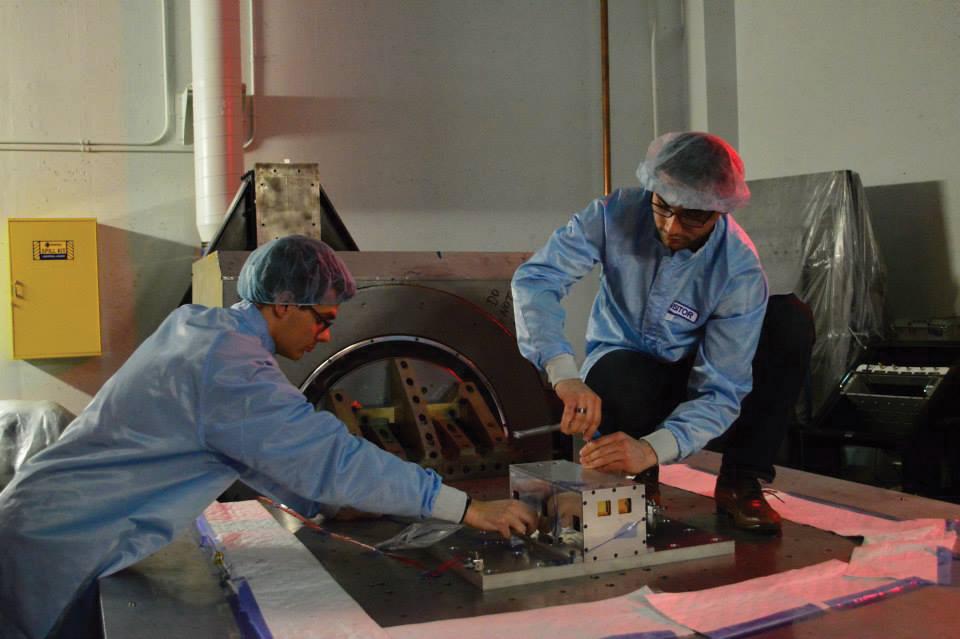- FMA
- The Fabricator
- FABTECH
- Canadian Metalworking
Future Engineers Aim for Space
UM students take on challenging satellite design for CSDC entry
- By Sue Roberts
- November 11, 2015
- Article
- Automation and Software
Science, future engineers, and hands-on manufacturing education converge. The federally incorporated, not-for-profit Canadian Satellite Design Challenge (CSDC), managed by CSDC Management Society Inc., brings teams of university students together to design and build small satellites as part of a countrywide competition. In May 2016 the winning satellite will be launched into orbit to conduct scientific research.
More than 300 University of Manitoba students from engineering, science, education, business, and art programs have participated in the program since its inception in 2010. This year’s 70-student team is working on a triple-cube (3U) satellite, dubbed the T-SAT3, designed for low earth orbit. Advisers from industry, academia, and government make themselves available to assist with the project.
Matt Driedger heads the mechanical portion of the University of Manitoba’s Space Applications and Technology Society (UMSATS) while he pursues his masters’ degree in mechanical engineering. “Our team is composed of university students from art, business, general classes, a lot from biology because of the nature of our experiment, and a large number of engineers—electrical, mechanical, computer, and a few biosystems.”
The satellite will contain the mechanisms required to study the effects of space--factors like weightlessness and radiation--on tardigrades. A tardigrade is a small, extremely hardy invertebrate that grows to about 2 mm long.
“They just don’t die,” said Driedger. “They’ve been sent into space before in their hibernative state, cryptobiosis, but never while active. They shrivel up into dehydrated little balls to hibernate and revive themselves when they feel an environment is more suitable for survival. Our experiment will observe how they behave when they are revived while still in space. Our tardigrades will be genetically modified to fluoresce under ultraviolet light so we can keep track of their movements.
“We will be studying the effect the vacuum of space has on the tardigrades after two weeks, eight months, and while being introduced to a liquid water environment. One of the things we need to do is create a way to transfer the tardigrades between these three different states while they remain in the same chamber.
“The device we are designing to control the flow of gases and water for the experiment has to be small because nanosatellites have very low power and the surface area we have for mounting the apparatus is quite small. And reliability is important. Each system that is part of the experiment has to function reliably during the one-year orbit because mass limitations make it difficult to build in redundancies.”
Testing Tardigrades and Satellite Structure
The limited size of the satellite makes the design of the structure and the subsystems for the experiment, including a tardigrade chamber, water chamber, gas bladder, and data collection system, challenging. Everything has to fit into final, cozy dimensions of 10 by 10 by 34 cm, the size of three stacked 1-U nanosatellites.
CAD models of the satellite are developed based on the functional needs of the structure, which are determined by the subsystems. The team applies finite element analysis (FEA) to the model and strengthens or lightens the structure as needed.
“After several FEA iterations we have a design which is strong, light, and fulfills all requirements. Then we move on to manufacturing prototypes,” said Driedger. “First we 3-D print a prototype to ensure the design meets the subsystem requirements and can be assembled. Then we machine the structure. Once the prototype has been made, we move on to physical testing.”

The test chamber (left), called a P-Pod, and UNSATS T-SAT2 (right) are prepared for physical testing. The outer surface of the satellite is covered in printed circuit boards (PCBs), which hold the satellite’s solar panels. The antennas are surprisingly, but effectively made from measuring tapes, a common nanosatellite antenna material. The external anodized aluminum side rails and internal P-Pod rails must be tightly toleranced to maintain a secure fit during vibrations while allowing the satellite to be easily moved in and out.
The team is currently in the FEA/model stage with 3-D printing in progress for some parts for the prototype. The finished satellite housing will be machined from 6061-T6 aluminum with some Teflon® and PEEK components.
“I would like our team to do all its own machining work. If we can keep the project in our hands, it’s a better educational experience and we can keep a closer eye on things,” Driedger said. “And many of our members are still students who haven’t learned about GD&T [geometric dimensioning and tolerancing] yet, so they become familiar with specifying tolerances, rather than saying a part has to be exactly 5 mm, which makes the project more laborsome than needed.”
Team members produce parts at AssentWorks, a Winnipeg community machine shop. For a monthly fee they have access to equipment including plasma and laser cutters, manual CNC mills, and a lathe. Some of the UMSATS participants have experience operating and programming equipment, but help is also available from AssentWorks members.
Software Donation Provides Design Power
BobCAD-CAM software is one of the industry resources contributing to the project. UMSATS received three copies of the software, along with training and support, as part of the company’s Manufacturers of the Future program. Dane Pendleton, director of education for BobCAD-CAM, said, “It was a no-brainer for us to work with the university program. Their challenge is exciting and ambitious, and we love their hunger for innovation. That’s exactly what our program is about.
“The Manufacturers of the Future program was developed when we noticed a disconnection between the school and the graduating students who needed CAD/CAM experience. Our software is user-friendly and has the power these projects need. Our program provides the tools to the school that will help the students enter their industrial careers with the knowledge gained using industrial-grade software during their education.
“The company believes that if we don’t continue educating individuals on software to work in the massive industry of manufacturing, we won’t have a software company in the future because of a lack of trained users.” Since beginning the donation program, BobCAD-CAM has supplied software packages to industry-specific programs in middle schools, high schools, community colleges, and universities around the globe. More than 40 Canadian educational institutions have the software in place.
“Nothing is more important to me than education,” Pendleton added. “When we contribute to these industry-based programs, we get to help the students—in a small way--create their future. Matt is constantly sending me data and information about the UMSATS program. I’m planning on them being successful and I’ll be able to attend the launch.”
All Eyes on the Launch
Driedger said, “We really want to be in a launchable state at the end of the current competition iteration [May 2016] with a good, reliable platform. And if we don’t win the competition, we will try to find sponsorships to get our satellite launched ourselves.”
The UMSATS team designed the satellite to meet launch criteria of multiple spaceflight companies. “Our satellite will be hitching a ride with something else. It will be used to balance the weight on the space vehicle. We don’t have control over who might be involved in the launch, so we have to design for everybody. That unknown means accommodating a wider range of vibration profiles and building for a little bit higher acceleration load.”
Once in space, the satellite will send data back to the ground station at the university. The station will be manned by students who may or may not be involved now. With some members graduating or moving on to other priorities and new members stepping in, the team is in constant flux. The average time commitment is substantial for a student, at least 10 hours a week.

UMSTAT team members from a variety of studies contribute their talents to the development of the T-SAT3 satellite entry for the Canadian Satellite Design Challenge.
“We don’t get credits for our work,” said Driedger. “We do it because it’s a very interesting, challenging project. We do it because we love space.”
Photos courtesy of UMSATS.
Related Companies
subscribe now


Keep up to date with the latest news, events, and technology for all things metal from our pair of monthly magazines written specifically for Canadian manufacturers!
Start Your Free Subscription- Trending Articles
- Industry Events
MME Winnipeg
- April 30, 2024
- Winnipeg, ON Canada
CTMA Economic Uncertainty: Helping You Navigate Windsor Seminar
- April 30, 2024
- Windsor, ON Canada
CTMA Economic Uncertainty: Helping You Navigate Kitchener Seminar
- May 2, 2024
- Kitchener, ON Canada
Automate 2024
- May 6 - 9, 2024
- Chicago, IL
ANCA Open House
- May 7 - 8, 2024
- Wixom, MI
















